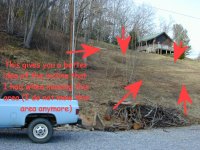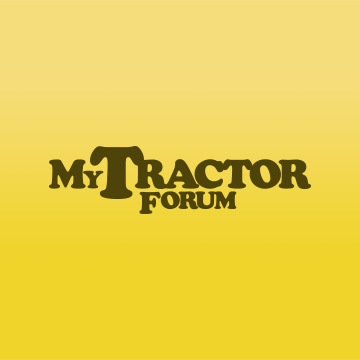Cajun power
Active Member
- Joined
- Apr 11, 2023
- Threads
- 1
- Messages
- 86
on a hunch here... at what altitude is your property for this mower?
high altitude...rich mixture..low power....low power = premature hydrodrive wear?
noting: for every 1,000 feet of altitude of elevation above sea level, the typical gasoline engine will lose about 3 percent of power...(less oxygen...not enough bang). example at 5,000 feet ASL = 15 percent loss of power. Mower engines are generally designed to handle some altitudes without significant issues BUT hydro drives are particularly sensitive to POWER (and not necessary RPM..which is how most people think of when they say things like ...don't idle your engine when in motion...keep it wide open throttle. Most think this is a factor of RPM...because that is how it is relatable...but actually when dealing with altitude...where oxygen is lower in percentage...you can be operating at wide open throttle at 3400 RPM (that's usually the governor max rpm for most mower engines)...at sea level...that best torque and power...however, at 5,000 feet ASL...you are still at 3400 RPM...but it's not nearly as much "umpf"..it's less power. And this can definitely be a problem for hydros, especially on large mowing properties THAT INVOLVE INCLINE/DECLINE...hills, slopes.
there are a few tricks that the old school engine mechanics can share to help improve power even from a naturally aspirated carb mower engine at altitude....but I would not be the guy to give you the 1-2-3 on that. I've heard about a few mechanics tricks...mostly from high altitude chainsaw gurus. I'm not sure how easily it would be to modify a mower engine for altitude though...I'm sure someone has done it
other comment: generally speaking higher quality longer lasting, more powerful hydro drives have large cooking fans, serviceable filters, and oil reservoirs so you can inspect the condition of the oil..you not only get better power, but top speed. Everything internally is usually built with higher quality components and manufacturing processes.....especially the 12 mm drives...the 10mm drives are pretty much what you find in the home owner to middle prosumer...the commercial grade stuff is 12 mm drives...and at least a 25 HP twin needed to power them AND mow at same time. ...That might be what you are dealing with: cheaply made hydrodrives...that you've replaced them three times kind of points to a a trend suggesting just not well built and suitable for your application. Moving up to a commercial grade mower based on a commercial grade hydro drive is going to make a difference. At 800 a pop and the time down to replace must be frustrating.
also: One technique for driving mowers that I have found works well to help extend the life of hydros...no jerky movements...long slow radius turns. and no sudden stops or quick reversing...I know this sound silly because they are designed to turn on zero...but when you put a great deal of force applied in a short period of time, like full forward to full reverse very suddenly.....that really heats things up quickly...all those bushings, bearings, valves, races, passages....they all get beat really hard. This is especially true on hills..both going up and going down. I take a long line and try to avoid turning quickly at the top and bottom and working the mower hard in a hill in a short period of time.. I put the hill INTO a large pattern...like the hill next to the house...you cut that and then keep running up the hill into a larger pattern...and visa versa when going down...for very steep hills..I never go UP...Always driving downslope. it make a huge difference in load on the engine...600 pounds plus my weight going down hill requires far less power than moving that up the same hill. And whre you can, take a track that is steady gradual slope that leads to the top of the hill and then cut down the steep slope.....So the hydros and engine has time to cool off and I'm not at top torque all the time. I don't know if it really make a difference...But it's just something I do. Kind of how I have a 40 year old truck...I baby it. I know what I could run it hard...it's more than capable. But it's a 40 year old truck because I baby it. FACT. (yes, people hate me on the highway...lol...eff em)
and last comment (I promise): There is a specific after install air bleed procedures when replacing hydro oil and filters...it is the same process for installing new hydrogears...you really want to refer to the service manual on this procedures and don't take shortcuts. This is one of the benefits BTW with the higher quality hydro drives with a reservoir tank...you can see with your own eyeballs the air bleed process to make sure it is actually happening...bubbles and burbles...all of this is done unloaded wheels off the ground...make sure whe you ever service your hydros or replace them, follow this service manual process....it really does make a difference.
really beautiful property there...with a view like that, mowing must be some kind of wonderful...awesome.
God Bless America, Happy Independence Day!
high altitude...rich mixture..low power....low power = premature hydrodrive wear?
noting: for every 1,000 feet of altitude of elevation above sea level, the typical gasoline engine will lose about 3 percent of power...(less oxygen...not enough bang). example at 5,000 feet ASL = 15 percent loss of power. Mower engines are generally designed to handle some altitudes without significant issues BUT hydro drives are particularly sensitive to POWER (and not necessary RPM..which is how most people think of when they say things like ...don't idle your engine when in motion...keep it wide open throttle. Most think this is a factor of RPM...because that is how it is relatable...but actually when dealing with altitude...where oxygen is lower in percentage...you can be operating at wide open throttle at 3400 RPM (that's usually the governor max rpm for most mower engines)...at sea level...that best torque and power...however, at 5,000 feet ASL...you are still at 3400 RPM...but it's not nearly as much "umpf"..it's less power. And this can definitely be a problem for hydros, especially on large mowing properties THAT INVOLVE INCLINE/DECLINE...hills, slopes.
there are a few tricks that the old school engine mechanics can share to help improve power even from a naturally aspirated carb mower engine at altitude....but I would not be the guy to give you the 1-2-3 on that. I've heard about a few mechanics tricks...mostly from high altitude chainsaw gurus. I'm not sure how easily it would be to modify a mower engine for altitude though...I'm sure someone has done it
other comment: generally speaking higher quality longer lasting, more powerful hydro drives have large cooking fans, serviceable filters, and oil reservoirs so you can inspect the condition of the oil..you not only get better power, but top speed. Everything internally is usually built with higher quality components and manufacturing processes.....especially the 12 mm drives...the 10mm drives are pretty much what you find in the home owner to middle prosumer...the commercial grade stuff is 12 mm drives...and at least a 25 HP twin needed to power them AND mow at same time. ...That might be what you are dealing with: cheaply made hydrodrives...that you've replaced them three times kind of points to a a trend suggesting just not well built and suitable for your application. Moving up to a commercial grade mower based on a commercial grade hydro drive is going to make a difference. At 800 a pop and the time down to replace must be frustrating.
also: One technique for driving mowers that I have found works well to help extend the life of hydros...no jerky movements...long slow radius turns. and no sudden stops or quick reversing...I know this sound silly because they are designed to turn on zero...but when you put a great deal of force applied in a short period of time, like full forward to full reverse very suddenly.....that really heats things up quickly...all those bushings, bearings, valves, races, passages....they all get beat really hard. This is especially true on hills..both going up and going down. I take a long line and try to avoid turning quickly at the top and bottom and working the mower hard in a hill in a short period of time.. I put the hill INTO a large pattern...like the hill next to the house...you cut that and then keep running up the hill into a larger pattern...and visa versa when going down...for very steep hills..I never go UP...Always driving downslope. it make a huge difference in load on the engine...600 pounds plus my weight going down hill requires far less power than moving that up the same hill. And whre you can, take a track that is steady gradual slope that leads to the top of the hill and then cut down the steep slope.....So the hydros and engine has time to cool off and I'm not at top torque all the time. I don't know if it really make a difference...But it's just something I do. Kind of how I have a 40 year old truck...I baby it. I know what I could run it hard...it's more than capable. But it's a 40 year old truck because I baby it. FACT. (yes, people hate me on the highway...lol...eff em)
and last comment (I promise): There is a specific after install air bleed procedures when replacing hydro oil and filters...it is the same process for installing new hydrogears...you really want to refer to the service manual on this procedures and don't take shortcuts. This is one of the benefits BTW with the higher quality hydro drives with a reservoir tank...you can see with your own eyeballs the air bleed process to make sure it is actually happening...bubbles and burbles...all of this is done unloaded wheels off the ground...make sure whe you ever service your hydros or replace them, follow this service manual process....it really does make a difference.
really beautiful property there...with a view like that, mowing must be some kind of wonderful...awesome.
God Bless America, Happy Independence Day!




